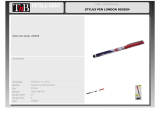
RECOMMENDED STYLUS CLEANING:
Use the supplied brush, dipped
in alcohol or an alcohol-distilled water solution. Commercial clean-
ing solutions may cause stylus damage or corrosion. The alcohol will
remove any sludge deposit coating the stylus tip. Always brush stylus
from back to front; never brush or wipe stylus from front to back or
side to side.
TO PRESERVE STYLUS LIFE:
1.
Follow turntable or tonearm instructions when adjusting antiskating
force in the suspension system of the tonearm.
2.
Do not handle the tonearm while it is in operation since this may
cause the arm to sweep across the record.
3.
If it is necessary to manually place the tonearm in the record
groove while turntable is rotating, release it as the stylus engages
the record groove.
4.
Correct improper set-down adjustment or malfunction of the turn-
table changing mechanism to prevent the stylus from striking the
edge of the turntable or record. Do not stack more records than
turntable manufacturer recommends.
5.
Take care to properly insert the stylus into the cartridge assembly
and the cartridge and shell assembly into the tone arm receptacle.
6.
Use proper vertical tracking force setting for each cartridge.
7.
Do not use badly warped, cracked or imperfect records.
8.
When dusting the turntable protect the stylus with the stylus guard.





















